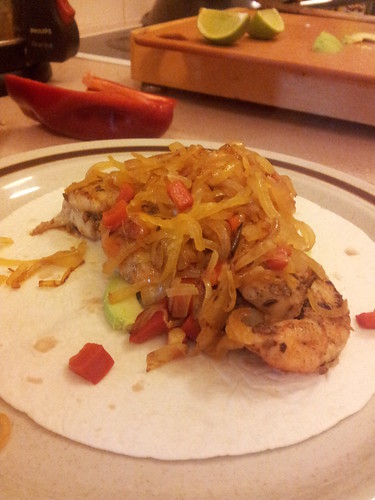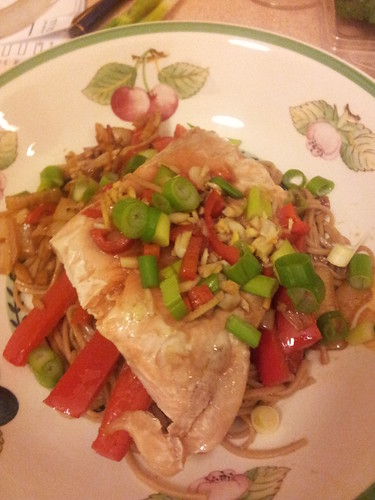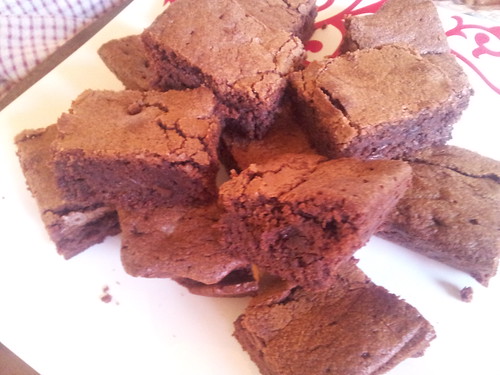As you might know, we’re big fans of Mexican food in this household. Chilli is a big draw card but, in addition, the dishes are usually quick to make and very fresh and full of both vegetables and crunch. We’ll often have our chicken quesadillas as a quick, mid week dinner.
Last night I had prawns defrosted and ready to go and no opportunity to head to the shops (yes, thanks to Mr Sleepy Toddler again) so dinner had to be magicked up with whatever we could get from our local shop (excellent for basics, not so excellent for anything too exotic).
The first recipe that popped up in my delicious feed was prawn fajitas, from The Family Kitchen (link now lost to the ethernet I’m afraid). Excellent idea! We (naturally) had to do some tweaking (seriously, who puts together a Mexican recipe with NO CHILLI in it?) but in under half an hour* we had a very tasty meal ready to go.
We wouldn’t normally add fennel seeds to a Mexican dish but the combination of crunch and aniseed flavour was a big win. And, of course, if you don’t have prawns, substitute protein of your choice.
Definitely a dish we’ll be doing again!
The following recipe serves two.
* Add on time if you’re needing to peel your prawns!
Ingredients
- neutral flavoured oil for frying
- half a red capsicum, finely chopped
- 1 brown onion, finely sliced
- 1 clove of garlic, crushed
- 1 tsp fennel seeds
- 1 tsp paprika
- 1 tsp ground coriander
- chilli flakes to taste
- 10 prawns, peeled and deveined
- lime
- half an avocado
- plain yoghurt
- tortillas
Instructions
- Begin by heating some oil in a frying pan and frying the onion, garlic and capsicum until soft and the onion has started to caramelise. Set aside.
- In the same pan, heat some more oil and add the spices. Fry briefly and add the prawns. Cook until the prawns are done. Finish with a generous squeeze of lime.
- Take a tortilla, spread with a spoonful of the yoghurt, top with prawns, onion mix and avocado.
- Wrap, serve and eat!
- If you want you can add lettuce, tomato, raw red onion or even a salsa. Or perhaps just a green salad on the side.



